2023 Toyota Sequoia First Drive Review: Hybrid Power Makes For Big Improvement

FAST FACTS
| Engine: | 3.4L V6 Turbo w/ hybrid assist |
| Output: | 437 hp, 583 lb-ft |
| Transmission: | 10AT, RWD/4WD |
| US fuel economy (MPG): | see text |
| CAN fuel economy (L/100KM): | see text |
| Starting Price (USD): | $59,795 (inc. dest.) |
| As-Tested Price (USD): | $69,195 (Limited, inc. dest.), $78,395 (TRD Pro, inc. dest.), $79,795 (Capstone, inc. dest.) |
| Starting Price (CAD): | see text |
| As-Tested Price (CAD): | see text |
Like the Tundra with which it shares its platform, the 2023 Toyota Sequoia was overdue for a new model.
Last time it had a full model change, the Large Hadron Collider hadn’t even smashed its first particles together. So here we are, a decade and a half later, with a ground-up redo sharing little more than the name with what came before.
This latest Sequoia is a very different redwood. A standard hybrid powertrain is very on-brand, though it makes for compromises no other vehicle in the large SUV space has to make. Can a classy interior and a suite of modern tech help break the Sequoia out of niche status? We spent a day with the lineup in Texas to find out.
Get a Quote on a New 2023 Toyota SequoiaWhat’s new?
As mentioned above, the Sequoia once again rides on the same platform as the Tundra pickup. The boxed steel frame is stiffer, though the dimensions are similar to before. Wheelbase is once again 122 inches (3,099 millimeters), though overall length is up a few inches, to 208.1 (5,286 mm). Toyota has shaved a fraction of the width, and all 2023 Sequoias are squatter than the last generation, save the off-road-oriented TRD Pro.
The massaged proportions do the Sequoia a heap of favors. The new design looks great to these eyes, better than the Tundra despite the similarities. Toyota has closed off the bottom edge of the Sequoia’s grille, so it avoids the handlebar moustache look of the pickup. The dramatic negative space above the wheel arches visually shrink the rig down, too. There’s no mistaking the Sequoia for anything less than huge, but it doesn’t look hefty nor cumbersome. More purposeful. Toyota brought everything from a base Army Green SR5 on 18s to multiple Capstones riding on 22s, and they all looked good to these eyes.
The one aspect of the design that feels half-baked is the black plastic chin spoiler. It’s no doubt there to improve fuel economy (which wasn’t available at the time of writing), but is unsubtle, and looks cheap.
For 2023, the Sequoia lineup encompasses five trims: SR5, Limited, Platinum, TRD Pro, and Capstone. Depending on trim, a TRD Sport or TRD Off-Road package is available. No matter which you choose, however, the Sequoia packs the excellent i-Force Max twin-turbo V6 hybrid powertrain.
Premium space, space at a premium
Our day with the Sequoia encompassed three trims: a highway run in a mid-level Limited with the TRD Off-Road package, an off-road blast in the TRD Pro, and a road loop in the fancy-pants Capstone range-topper.
SEE ALSO: 2022 Toyota Tundra Capstone First Drive Review: Fancy FlagshipThe Limited strikes a solid balance between workhorse and premium. The SofTex seats look and feel good, with a solid range of power adjustments and a memory function as well. From the driver’s seat there’s little difference between it and its pickup sibling. That’s no bad thing: the Tundra and Sequoia share an appealingly solid, rectilinear dashboard design. The materials are consistent quality, and the finish is typical Toyota tight.
The TRD Pro and Capstone go in very different directions. The former is all off-road cool, with the funky technical camo pattern that debuted on the Tundra back for another showing here. The color scheme is pretty monochrome, with a big red “Toyota” badge stamped onto the dashboard ahead of the passenger. You know, in case they forgot. Brave folks can spec a red SofTex interior, which might seem OTT, but works all too well. On the flip side, the Capstone is all swanky luxury, sumptuous cream leather and open-pore wood. It’s a very pretty place to spend time, though the cheap plastic catch-all between the second-row captain’s chairs does detract.
Space is plentiful in the first two rows. Higher trims bring in a panoramic moonroof, which can limit second-row headroom to 37.5 inches (953 mm); good, but not great. It’s the third row that becomes uncomfortable for adults. Headroom is actually pretty decent, but a high floor and low seat cushion puts knees to chests. Toyota is proud of the third-row sliding function, which can liberate up to 33.7 inches (856 mm) of legroom, but that’s still less than the competition. At least it’s easy to get in and out, with a tumble-forward second row.
Cargo space is also at a premium. With all seats up, there’s between 11.5 and 22.3 cubic feet (326–631 liters) of storage. That expands to 49.0 cubes (1,388 L) with the third row folded, but it doesn’t drop into the floor like others (or indeed the last Sequoia). Instead, the seats sit proud of the floor. Toyota has included a multi-level load shelf to align with the seats, but it can’t hide the hit to storage space. Toyota says the shelf is rated to 200 pounds, depending on placement.
Tech from this decade
Central to the Sequoia’s modern feel is the large 14.0-inch touchscreen. (An 8.0-inch unit is standard on the SR5.) It runs Toyota’s new infotainment system, which is to Entune what a modern MacBook is to a PC running Windows XP.
With a simple main menu that should feel instantly familiar to smartphone users, the new infotainment is a cinch to use. Voice commands work too, allowing users to “Hey Toyota” there way to directions, adjust the climate controls, or change the radio station. Wireless Apple CarPlay and Android Auto are part of the package with the larger screen, too.
A configurable 12.3-inch digital instrument panel looks sharp, while an available 10.0-inch head-up display drops pertinent info right in the driver’s field of vision. There’s a notable lack of second-row entertainment options, but Toyota knows families bring their own tablets in tow these days.
SEE ALSO: Chevrolet Tahoe vs Nissan Armada Comparison: Goliath vs GoliathGiven its likely role as a family hauler, the Sequoia comes loaded to the gills with standard safety tech. We’re talking Toyota Safety Sense 2.5, which includes a pre-collision system with pedestrian detection, lane departure with steering assist, lane trace assist, adaptive cruise control, auto high beams, and road sign recognition. Blind-spot monitoring and rear cross-traffic alert are both standard too, and take into account any attached trailer.
Looks big, drives big
The Sequoia drives how it looks: large and in charge. Every model we drove was 4WD, with driver-selectable modes. The hybrid V6 powertrain is just as great here as it is in the Tundra; quick to respond yet linear in its delivery, it makes short work of any situation thrown its way. The 10-speed ably shuffles through the gears. The Capstone’s extra glass lamination keeps the V6 rumble at a distance—Toyota’s engineers have piped in some V8-esque sounds through the speakers, but it’s natural enough to get a pass here. The TRD Pro’s exhaust gives the Sequoia a mean streak, though the noise can prove tiring in constant stop-and-go.
Compared to the Tundra, Toyota has lightened the helm of the Sequoia. Combined with the live rear axle, that makes for a somewhat vague on-road driving experience. A little more weight would increase driver confidence. That being said, the TRD Pro comes into its own on a high-speed dirt bowl. Here, the steering breathes with the uneven and unpredictable surface, avoiding feeling nervous. Slow things down, and the Pro’s added half-inch of ride height (now 9.1 inches / 231 mm) and improved approach angle (23 versus 15 degrees) lets it clamber over rocky hills and yumps.
Crawl Control keeps the Sequoia at a steady speed, allowing the driver to focus on obstacles, like sharp rocks. There’s also the Multi-Terrain Select system, which tailors the drivetrain settings for things like rocks and dirt, mud and sand, and more. The brake pedal is progressive and predictable, off or on tarmac.
While Toyota didn’t have EPA fuel economy figures at the time of writing, our on-hands testing showed roughly 19 mpg.
Toyota rates the Sequoia at anywhere from 8,920 lb (Capstone 4WD) to 9,520 lb (SR5 2WD) of towing capacity.
Dollars and sense
The well-equipped Sequoia SR5 starts at $59,795, including destination. That’s around 10-percent more than where the Ford Expedition and Chevy Tahoe lineups start, but the Sequoia comes better equipped, and with that star of an engine. Even with the base model, buyers will get full LED exterior lighting, heated and powered side mirrors, 18-inch alloys, 12.3-inch digital instrument panel, power-adjustable heated front seats, moonroof, panoramic view monitor, and three-zone auto climate control, amongst other niceties. The mid-level Limited ($66,195) adds chrome details, 20-inch alloys, and SofTex seats with front ventilation.
Moving up to the Platinum ($72,395) brings in leather seating with heating and ventilation for the first two rows, second-row captain’s chairs, powered third row, panoramic moonroof, powered steering adjustment, and upgraded adaptive headlights. Power extending running boards, and a 10.0-inch HUD are optional, and become standard on the Capstone ($76,795), which includes swanky wood touches and semi-aniline leather.
The TRD Pro ($78,395) eschews most of the creature comforts of the Platinum and Capstone for heartier off-road gear.
Every trim requires an extra $3,000 for 4WD, except the TRD Pro, where it’s standard. Power tow mirrors are also available on all trims.
Final Thoughts: 2023 Toyota Sequoia First Drive Review
Packaging limitations ultimately restrict the 2023 Toyota Sequoia’s functionality. Which is too bad, because Toyota has blessed it with the best gas engine in the segment, and a well-appointed interior with bang-up-to-date tech.
Those who both tow regularly and drive within the city will appreciate the Sequoia’s smooth, effortless drive. The TRD Pro will tackle more mud than most people really need, too. But if you regularly need to sit anyone larger than toddlers in the back, or fill it to the brim with stuff, the Sequoia struggles to match up to the competition. The 2023 Toyota Sequoia is an excellent three-row SUV for those who only need two.
FAQs
How much does the 2023 Toyota Sequoia cost?
Pricing begins at $59,795, including destination, for a Sequoia SR5 4×2.
Will the 2023 Toyota Sequoia be redesigned?
Yes; the entire truck is new, from the chassis to the engine.
Can you buy a non-hybrid 2023 Toyota Sequoia?
No, all trims use the i-Force Max turbo V6 with hybrid system.
Become an AutoGuide insider. Get the latest from the automotive world first by subscribing to our newsletter here.
LOVE IT
- Strong powertrain
- Great infotainment
- Good looks
LEAVE IT
- Bad third-row experience
- Same with cargo space
- Vague steering

Kyle began his automotive obsession before he even started school, courtesy of a remote control Porsche and various LEGO sets. He later studied advertising and graphic design at Humber College, which led him to writing about cars (both real and digital). He is now a proud member of the Automobile Journalists Association of Canada (AJAC), where he was the Journalist of the Year runner-up for 2021.
More by Kyle Patrick



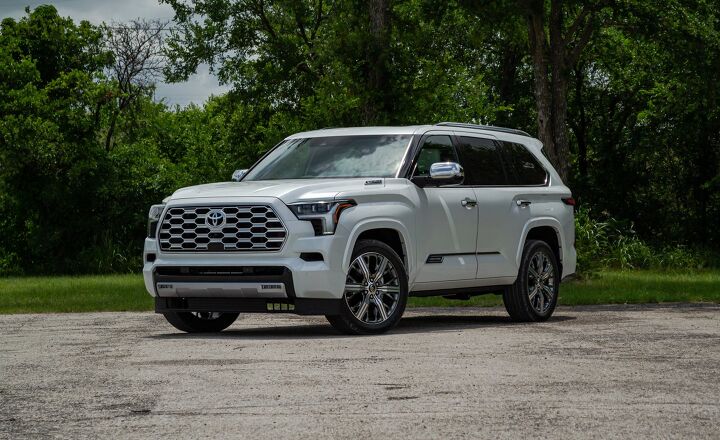






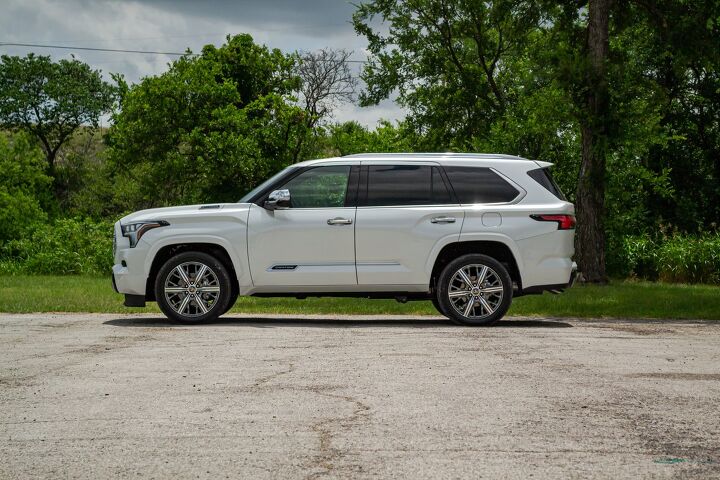

















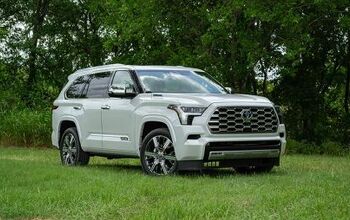




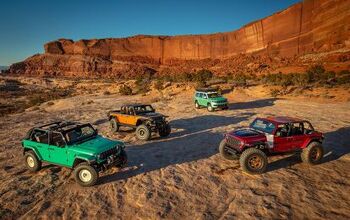
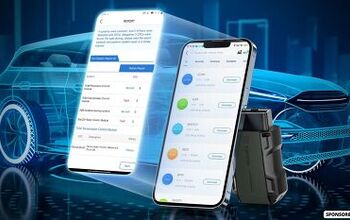
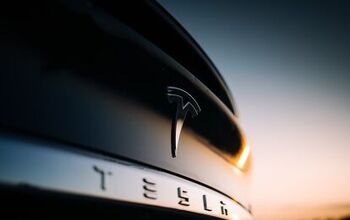
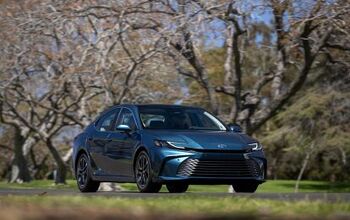






Comments
Join the conversation